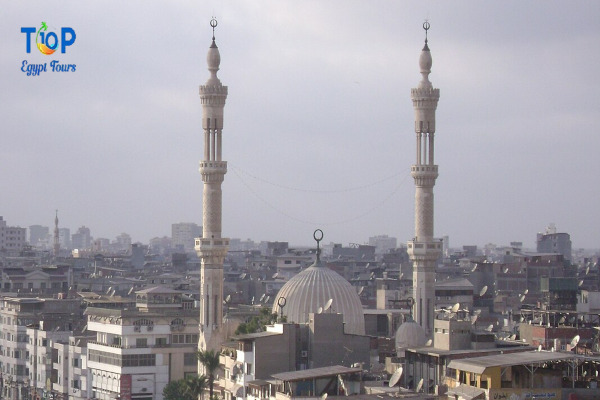Damietta Governorate Egypt, an enchanting destination located in the heart of Egypt, The area of Damietta Governorate reached 910.26 square kilometers.
In this article, we will uncover for you the Damietta Governorate Egypt with Top Ten Egypt
The most important landmarks of Damietta Governorate:
Tell Al-Barashiya area:
It is located southeast of the city of Faraskour, where a Roman bath was found, which is considered unique in the eastern Delta region.
Tal Al-Deir area in New Damietta:
It is located south of the city at the end of the industrial zone. Coffins and icons from the Roman era were found next to the monastery hill.
Church of the Virgin Mary:
Its establishment dates back to the year 1745, and it was the property of the budget affiliated with Rome, and it was known at that time as the Church of Yesterday. With the extinction of the Catholic families from Damietta, the church passed to the Orthodox Copts. It contains the body of Saint Mar Sidhom Bishay, who was martyred in this spot.
Rich Historical Background of Damietta
Ancient Roots: Damietta’s history can be traced back to ancient times, with the city believed to have been established as early as the 4th century BC. It has been a significant settlement for various civilizations, including the Ancient Egyptians, Greeks, Romans, and Persians.
Strategic Importance: Due to its location at the mouth of the Nile River and its proximity to the Mediterranean Sea, It served as a vital port for trade and maritime activities, connecting Egypt to the wider Mediterranean world.
Conquests and Empires: Throughout history, Damietta has been the site of numerous conquests and conflicts. It was conquered by Muslim forces during the Islamic conquest of Egypt in the 7th century and later became a key stronghold during the Crusades, featuring prominently in the Fifth and Seventh Crusades.
Flourishing Culture: Over the centuries, Damietta has been a melting pot of cultures, traditions, and religions, contributing to its diverse cultural heritage. The city has been influenced by Islamic, Christian, and Jewish civilizations, all leaving their mark on its art, architecture, and customs.
Traditional Crafts and Artistry of Damietta:
Here are some examples of traditional crafts and artistry in Damietta:
Wood Inlay (Khattam): Damietta is famous for its intricate wood inlay work, known as “Khattam.” Skilled artisans create beautifully detailed patterns using small pieces of wood, mother-of-pearl, and brass, which are meticulously arranged and embedded into wooden surfaces.
Hand woven Textiles: The city is also known for its hand woven textiles, including carpets, rugs, and tapestries. Skilled weavers use traditional techniques and patterns, often incorporating vibrant colors and intricate designs that reflect Damietta’s artistic heritage.
Brass and Copper Craftsmanship: Artisans in Damietta have long been revered for their metalwork, particularly in brass and copper. They create a wide range of items, including lanterns, trays, utensils, and decorative pieces, often featuring elaborate patterns and designs.
Pottery and Ceramics: The production of pottery and ceramics is another traditional craft in Damietta. Local potters use age-old methods to mold and decorate clay, resulting in a variety of functional and decorative pottery items such as bowls, vases, and tiles.
Traditional Embroidery: Damietta is known for its traditional embroidery, which often adorns garments, linens, and other textile products. The intricate and colorful motifs reflect the cultural identity and artistry of the region.
Every Egyptian Governorate has a story to tell. Let us guide you through them—Browse Here!
As we conclude our journey through Damietta Governorate, it becomes evident that this destination is more than a geographical location; it’s a living testament to Egypt’s diverse history and cultural legacy.



Comment (0)